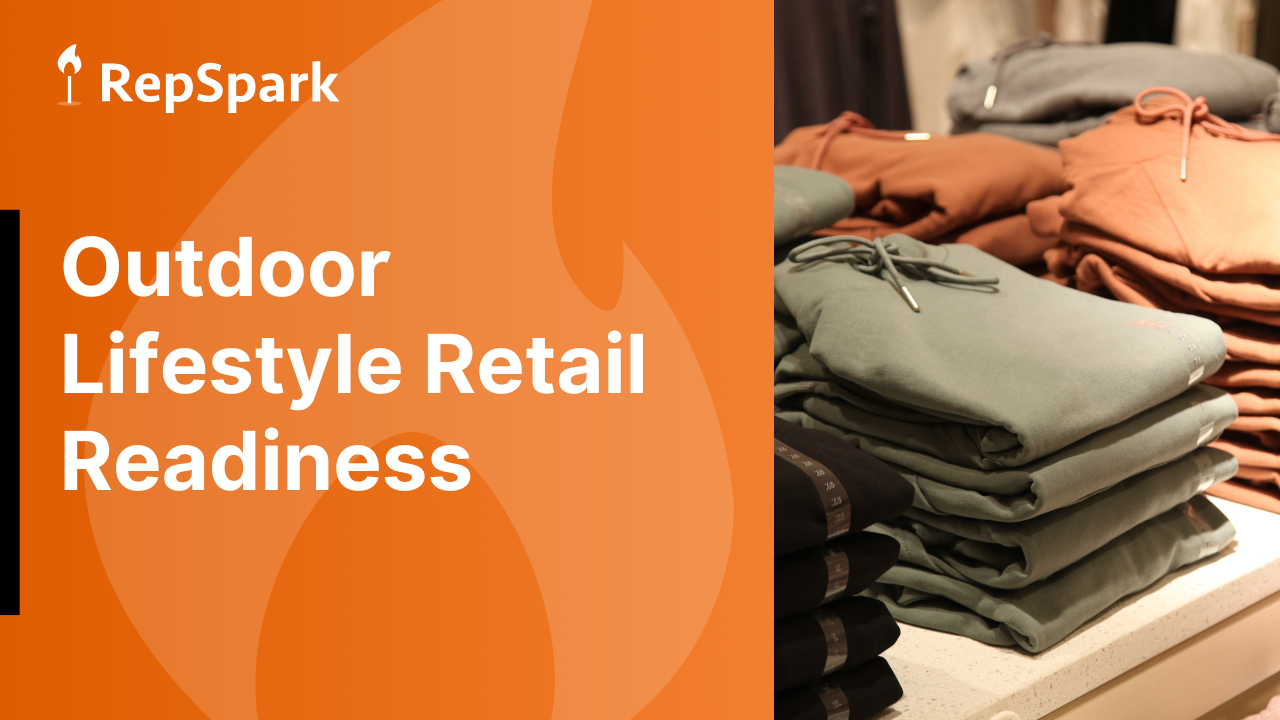Omnichannel Selling for Wholesale Brands
- Chapter I: Introduction
- Chapter II: What Does Omnichannel Selling Mean for Wholesale Brands?
- Chapter III: How Can Brands Create a Seamless Buying Experience Across Channels?
- Chapter IV: How Do ERP and Inventory Integrations Power Omnichannel Selling?
- Chapter V: How Can Sales Reps Fit Into an Omnichannel Strategy?
- Chapter VI: How Does Omnichannel Selling Retain Digital-First Retailers?
- Chapter VIII: Conclusion
- Chapter VIII FAQ
Introduction
This is something brands working with retailers need to know.
Whether they’re browsing your digital line sheet, walking a trade show, or emailing their rep, your retailers expect consistency: the same product data, pricing, and brand story everywhere.
That’s the essence of omnichannel selling for wholesale brands.
It’s about connecting your online portals, showrooms, and sales reps into one cohesive ecosystem where data flows freely and retailers buy confidently.
With RepSpark, apparel, golf, resort, and outdoor brands are bridging digital and human touchpoints to build stronger, more profitable relationships.
Related Content
What Does Omnichannel Selling Mean for Wholesale Brands?
Omnichannel selling means your retailers can interact with your brand seamlessly across every touchpoint. That can be online, in-person, or through their dedicated rep. In a B2B context, it’s not just about having multiple sales channels; it’s about unifying them so inventory, pricing, and brand content are consistent everywhere.
RepSpark enables this with real-time ERP integrations, centralized order data, and digital tools that bring your entire wholesale operation onto one connected platform.
That means a rep at a tradeshow and a retailer shopping your online catalog both see the same inventory levels, product details, and pricing.
How Can Brands Create a Seamless Buying Experience Across Channels?
A true omnichannel experience starts with accessibility. Retailers should be able to discover, shop, and reorder your products anytime and anywhere without needing to call customer service.
RepSpark’s Branded B2B Portals and Digital Catalogs make this possible by letting retailers browse collections, view current and future inventory, and place orders 24/7.
Meanwhile, Virtual Showrooms deliver immersive buying experiences where reps or retailers can interact with products through video storytelling and tagged SKUs.
Together, these experiences ensure every buyer touchpoint feels personalized and connected.
Related Content
How Do ERP and Inventory Integrations Power Omnichannel Selling?
Omnichannel success depends on accurate, unified data. Without it, brands risk overselling, order errors, or misaligned pricing.
RepSpark integrates directly with your existing ERP system to keep product data, pricing, and stock levels in sync across every selling channel.
As a result, your online store, showroom, and sales reps all operate from the same data set which eliminates duplicate entry and manual reconciliation.
This integration also supports real-time inventory visibility, so when a retailer orders online, the system instantly updates across your entire wholesale network.
Related Content
How Can Sales Reps Fit Into an Omnichannel Strategy?
Let’s make this clear, omnichannel doesn’t replace sales reps. It amplifies them.
When your data, catalogs, and communications live in one ecosystem, your reps become strategic advisors rather than order-takers.
RepSpark’s Customer Communication Hub acts as a built-in CRM that helps reps track account activity, share digital line sheets, and manage retailer interactions in one place.
Reps can monitor open orders, recent buys, and even marketing engagement to better anticipate client needs.
With access to live product and pricing data, reps can confidently present assortments and close deals faster, whether that’s in-person, on Zoom, or via email.
How Does Omnichannel Selling Retain Digital-First Retailers?
Today’s retailers expect frictionless experiences. They want the same convenience they get from DTC sites: transparency, personalization, and immediate access.
RepSpark helps brands meet these expectations with RepSpark Community, a discovery network where retailers can browse and connect with new brands, and with Microsites, which let retailers co-host branded online events and collections.
By integrating social commerce, digital storytelling, and data-backed insights, omnichannel selling helps brands stay relevant to the next generation of digital-first buyers.
Conclusion
Omnichannel selling for wholesale brands can be your blueprint for sustainable growth. By aligning your ERP, digital portals, showrooms, and reps into one connected ecosystem, you deliver the seamless, data-driven experiences today’s retailers demand.
With RepSpark, brands unify their operations, strengthen retailer relationships, and future-proof their sales channels one connected touchpoint at a time.
FAQ
How does RepSpark integrate with other systems?
RepSpark connects seamlessly to ERPs, accounting systems, and third-party tools via public APIs to make sure you have a single source of truth for orders, inventory, and pricing.
Can I track both online and rep-driven orders in one place?
Yes. RepSpark consolidates all wholesale activity (orders, invoices, payments, and communication) into a unified dashboard.
Does omnichannel work for international retailers?
Absolutely. With Global Commerce support, brands can manage multi-currency transactions and multilingual catalogs to serve retailers worldwide.
What’s the ROI of going omnichannel?
Brands report higher average order values, faster sell-through, and reduced manual data entry.
From Our Blog
Stay up to date with what is new in our industry, learn more about the upcoming products and events.

8 Steps to Help Your Outdoor Lifestyle Brand on Store Shelves

RepSpark Achieves PCI DSS Compliance for 2025-2026

